Posts Tagged ‘dog training’
New Year, New Pet Resolutions: Keeping Your Pet Healthy in 2025
 As we step into 2025, it’s the perfect time to reflect on how we can improve not only our own well-being but also the health of our beloved pets. Just like humans, animals benefit from setting health and wellness goals—and New Year’s resolutions are a great way to kickstart positive changes. At Olsen Veterinary Clinic, we’re committed to helping you give your pet the best possible care this year. In this article, we’ll share some practical and achievable tips for improving your pet’s health in 2025, including weight management, exercise, and regular check-ups.
As we step into 2025, it’s the perfect time to reflect on how we can improve not only our own well-being but also the health of our beloved pets. Just like humans, animals benefit from setting health and wellness goals—and New Year’s resolutions are a great way to kickstart positive changes. At Olsen Veterinary Clinic, we’re committed to helping you give your pet the best possible care this year. In this article, we’ll share some practical and achievable tips for improving your pet’s health in 2025, including weight management, exercise, and regular check-ups.
1. Set Realistic Weight Management Goals
Obesity is one of the most common health issues facing pets today, but it’s also one of the easiest to prevent or manage. Maintaining a healthy weight not only helps your pet live longer but also reduces the risk of developing conditions like arthritis, diabetes, and heart disease.
How to Achieve It:
- Consult Your Veterinarian: Schedule a weight assessment with us. We’ll determine your pet’s ideal weight and create a customized nutrition plan based on their age, breed, and lifestyle.
- Portion Control: Measure your pet’s food and avoid overfeeding. Remember, treats should make up no more than 10% of their daily calorie intake.
- Healthy Treats: Swap out high-calorie treats for healthier options like baby carrots, apple slices, or specially designed low-calorie treats.
- Regular Monitoring: Keep track of your pet’s weight throughout the year. We recommend regular weigh-ins at our clinic, so we can make adjustments as needed.
2. Exercise: Get Moving Together
Regular physical activity is essential for your pet’s physical and mental well-being. Exercise helps to maintain a healthy weight, reduce stress, and improve joint health. Whether your pet enjoys playing fetch, going for walks, or chasing after a favorite toy, make it a goal to incorporate more movement into their daily routine.
How to Achieve It:
- Start Small: If your pet isn’t used to a lot of exercise, start with short walks or light play sessions and gradually increase the intensity.
- Make it Fun: Keep your pet engaged by rotating through different types of activities. For dogs, try a mix of walking, running, and interactive play. For cats, consider puzzle feeders or chasing toys to encourage movement.
- Consistency is Key: Set a daily exercise schedule. Aim for at least 30 minutes of activity for dogs, but adjust based on your pet’s breed and energy levels. Cats may need less structured playtime but should still be encouraged to move.
3. Regular Check-Ups and Preventive Care
A routine visit to the vet is essential for maintaining your pet’s health throughout the year. Regular check-ups allow us to catch any potential health problems early, when they are more treatable. Additionally, preventive care like vaccinations, dental cleanings, and parasite control can save your pet from unnecessary discomfort and costly treatments down the line.
How to Achieve It:
- Annual Exams: Schedule at least one wellness exam each year, or more frequently if your pet is senior or has health issues. This allows us to monitor changes and keep up with vaccinations and preventative treatments.
- Dental Health: Poor dental hygiene is linked to several serious health problems in pets, including heart and kidney disease. Set a goal to brush your pet’s teeth regularly (or schedule professional cleanings if needed).
- Parasite Prevention: Ensure your pet stays on a regular schedule for flea, tick, and heartworm prevention. These pesky parasites can lead to serious complications if left unchecked.
4. Hydration and Diet: Feed for Health
The food your pet eats directly impacts their health, energy levels, and overall quality of life. Setting dietary goals is an important part of keeping them healthy in 2025.
How to Achieve It:
- High-Quality Diet: Feed your pet food that is appropriate for their age, size, breed, and activity level. Talk to us about the best options for your pet’s specific needs.
- Hydration: Ensure your pet always has access to fresh water. Dehydration can lead to kidney problems and other serious health concerns.
- Avoid Human Food: While it can be tempting to share scraps with your pet, many human foods are toxic to animals. Stick to specially formulated pet food and treats to avoid harmful consequences.
5. Mental Health Matters
Just as physical health is important, mental health plays a key role in your pet’s well-being. Boredom, stress, and anxiety can lead to behavioral problems and even physical illness. Make 2025 the year you focus on stimulating your pet’s mind and reducing stress.
How to Achieve It:
- Enrichment: Provide puzzle toys, interactive games, and opportunities for exploration. Dogs love scent games and training challenges, while cats enjoy climbing, hiding, and hunting for treats.
- Calming Products: If your pet suffers from anxiety, try calming products like pheromone diffusers, anxiety wraps, or calming supplements. These can be especially useful for pets who experience stress during travel, vet visits, or changes in routine.
- Quality Time: Spend quality, undistracted time with your pet every day. Whether it’s snuggling on the couch or playing outside, this time strengthens your bond and helps them feel secure.
6. Track and Celebrate Milestones
Finally, celebrate the progress you and your pet make toward your health goals! Keeping track of milestones can be motivating and provide positive reinforcement for both you and your furry friend.
How to Achieve It:
- Set Measurable Goals: Whether it’s a specific weight target, a certain amount of exercise, or a healthier diet, define your goals clearly and make them measurable.
- Celebrate Success: Reward your pet with affection and praise when they meet goals (but remember, rewards don’t always have to be food-based!). Seeing progress will motivate you both to keep up with your resolutions throughout the year.
In Conclusion: A Healthy 2025 for Your Pet
At Olsen Veterinary Clinic, we believe in setting achievable and realistic goals that can help your pet thrive in 2025 and beyond. Whether it’s improving their weight, exercise routine, or overall health, these resolutions are all about providing your pet with the best quality of life possible. Remember, we’re here to guide you every step of the way, and together, we can ensure your pet’s health and happiness throughout the year.
Ready to make this year the healthiest yet for your pet? Give us a call to schedule a check-up, and let’s work together to achieve those resolutions!
Happy New Year from Olsen Veterinary Clinic! Here’s to a healthy, happy 2025 for you and your pet.
Understanding and Addressing Common Pet Behavioral Issues
5 Ways to Keep Your Dog Safe in the Snow
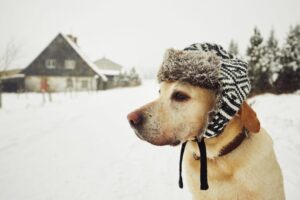 Keeping a dog safe in the snow is important, as cold weather can pose various risks to their health and well-being. Here are five ways to ensure your dog stays safe in snowy conditions.
Keeping a dog safe in the snow is important, as cold weather can pose various risks to their health and well-being. Here are five ways to ensure your dog stays safe in snowy conditions.
-
- Ensure Adequate Shelter: Ensure that your dog has access to a warm and dry shelter, such as a well-insulated doghouse or a heated indoor space. Limit the time your dog spends outdoors in extreme cold weather, especially during snowstorms.
- Use Protective Gear: Invest in appropriate winter gear for your dog, such as a waterproof and insulated coat. Booties can protect their paws from ice, snow, and harmful chemicals like de-icing salts. Make sure the gear fits properly and doesn’t cause any discomfort.
- Monitor Paw Health: Snow and ice can accumulate between the paw pads, leading to discomfort or injuries. Regularly check your dog’s paws for ice balls, cuts, or signs of frostbite. Wipe their paws with a damp cloth to remove any salt or chemicals.
- Keep Them Hydrated: Cold weather can be dehydrating and dogs may be less inclined to drink water when it is cold. Ensure that your dog has access to fresh water at all times. Dehydration can contribute to health issues, including susceptibility to hypothermia.
- Adjust Diet and Monitor Weight: Dogs my burn more calories in cold weather to stay warm. Adjust their diet accordingly and monitor their weight. A well-nourished dog is better equipped to handle the challenges of cold weather.
Remember that individual dogs have different tolerance levels for cold weather, and factors such as breed, age, and health should be taken into consideration. Always obeserve you dog for signs of discomfort or stress, and consult with your veterinarian if you have specific concerns about your dog’s well-being in snowy conditions.
If at any time you have concerns or questions, do not hesitate to contact our office. Have a safe and fun winter with your pup!
Should Your Dog Get a Choker Collar? Here’s What You Need to Know
 Whether or not your dog should wear a chain choker collar is a matter of debate among dog trainers, veterinarians, and animal welfare organizations. There are several factors to consider before deciding to use a chain choker collar:
Whether or not your dog should wear a chain choker collar is a matter of debate among dog trainers, veterinarians, and animal welfare organizations. There are several factors to consider before deciding to use a chain choker collar:
1 Training Methodology: Chain choker collars are often used in training as a correction tool. However, they are associated with aversive training methods that rely on punishing undesirable behaviors through discomfort or pain. Many modern dog trainers advocate for positive reinforcement-based training methods, which focus on rewarding desired behaviors rather than punishing unwanted ones.
2 Breed and Size of the Dog: Smaller or more delicate dog breeds may be more vulnerable to injury when using chain choker collars. Breeds with thin necks, like Greyhounds, may be at a higher risk.
3 Health and Behavior Issues: Some dogs may have underlying health issues or behavioral problems that make the use of chain choker collars risky or inappropriate. For example, dogs with respiratory problems, brachycephalic breeds (i.e., Bulldogs), or fearful and aggressive should not be subjected to such collars.
4 Training Experience: If you are not experienced in using chain choker collars correctly, there is a risk of causing harm to your dog or reinforcing negative behaviors unintentionally. It is crucial to learn how to use these collars properly if you choose to use them.
5 Alternatives: There are many alternative training tools and methods available that can effectively train dogs without resorting to aversive methods. Positive reinforcement, clicker training, and head halters are examples of more humane and effective training tools.
6 Consultation with a Professional: If you are considering using a chain choker collar, it is strongly recommended that you consult with a professional dog trainer or behavioralist who can assess your dog’s specific needs and help you make an informed decision.
7 Local Laws and Regulations: Some places have laws and regulations that restrict or even ban the use of certain dog collars, including chain choker collars. Be sure to check your local laws and follow them accordingly.
If you have any questions about this or anything else, don’t hesitate to contact our office.
National Pet Theft Awareness Day
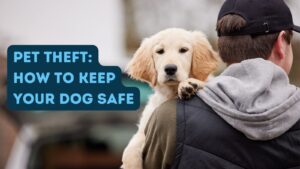 Our pets are very important to us and we rely on them for comfort and support every day. So it is devastating and hard to believe that a pet would be stolen. Every year about 2 million pets go missing with only about 10 percent returned home. These figures have alarmingly risen about 37 percent since 2007. So in honor of National Pet Theft Awareness Day which is being celebrated on February 14, I am going to blog about why they are stolen and how to reduce the possibility of your pet being dog- or cat- napped.
Our pets are very important to us and we rely on them for comfort and support every day. So it is devastating and hard to believe that a pet would be stolen. Every year about 2 million pets go missing with only about 10 percent returned home. These figures have alarmingly risen about 37 percent since 2007. So in honor of National Pet Theft Awareness Day which is being celebrated on February 14, I am going to blog about why they are stolen and how to reduce the possibility of your pet being dog- or cat- napped.
There are quite a few reasons why someone may steal a pet. According to PetFBI, these are the most common:
- Pet Flipping: Popular breeds of dogs can be “resold” online or in the paper.
- Reward: Some pets are stolen in hopes the owner will offer a reward, which the thief will then claim
- Puppy Mills: Pets that have not been spayed or nuetered may be turned over to backyard breeders or puppy mills
- Dog Fighting Rings: Small dogs and cats have been stolen to be used as “bait” for dog-fight training. The large breed dogs are often used as dog fighting candidates.
- Neighbors: If pets have been known as “nuisances” neighbors have been known to take animals and dump them in other locales.
- Relatives: Sadly, many pet thefts come from family members who are upset with you like in a divorce or family dispute
- Good Intentions: Not all pet-nappings are maliscious. A good-hearted person may believe that they are helping your pet if they feel that the pet is being neglected in some way. This is why you never leave your pet tied up in your yard, keeping them outside only, or have a pet that has signs of being neglected.
There are steps that owners can take to prevent their pets from being stolen. First and foremost, HAVE YOUR PET MICROCHIPPED and make sure that their records are updated. Remember that the microchip is only as good as the registration, so make sure that they are microchipped. In addition, you can:
- Your pets should not be allowed to run free outdoors unattended and make sure that your pets are always wearing a collar and identification.
- Spay and neuter your pets
- Don’t tie up your dog outside of a restaurant or store and never leave your pet in a car.
- Keep dog doors and fence gates locked when you are not at home.
- Have updated photos of your pet with emphasis on special markings
- Install cameras. Indoor and outdoor camera networks are ideal for keeping your pet safe.
Nothing is scarier or upsetting to come home and find your pet missing. It is of most importance to act quickly as every minute matters when you are looking for your pet, whether they have escaped from your yard or have been dog-napped.
If you believe that they have been stolen, immediately report it to the police. This provides a record that is documented and can be used for further action. It is important to canvas the area on foot every day. Creating a “Lost Pet” poster and placing throughtout the community helps others watch for your pet in cars, on the street or at neighbors. Post a lost pet report through your microchip company and your animal control. Avoid posting a reward is being offered.
If you have any other questions about microchipping or keeping your pet safe, do not hesitate to contact our office today.
New Puppy Checklist: Everything You Need Before Welcoming Your New Furry Friend into Your Life
 Bringing a new puppy into your home is an exciting time but requires some preparation for your home. Puppies require a lot of attention and care, so this checklist will be beneficial if you are unsure where to start with the basics for your new puppy.
Bringing a new puppy into your home is an exciting time but requires some preparation for your home. Puppies require a lot of attention and care, so this checklist will be beneficial if you are unsure where to start with the basics for your new puppy.
Some companies have created puppy starter kits. For example, this box made by Chewy has a set of toys, treats, and potty-training materials to help you with your new puppy. All top-rated items, new puppy owners are sure to appreciate it. It also makes a great gift. It can be found here.
Beyond toys, treats, and potty-training materials, puppies need food and water bowls. There are a lot of different options, but one that is slightly lifted is easier for your puppy to eat from. If you get one with walls, it is more likely your floor will stay cleaner.
Also necessary is a bed for your pet. An elevated bed is good for keeping your dog lifted and is helpful for teaching different cues. Other more traditional options are great too, especially as your pups are growing quickly.
Some owners choose to crate their puppies, and there are a lot of options but must be replaced as dogs grow. Crates help dogs have a safe place, especially as they adjust to a new space and lifestyle.
Also important for your new puppy is a leash. There are many kinds of leashes, with different uses. It will most likely be trial and error to find what works for you and your puppy, so be prepared for a trial period.
Puppies require hygiene efforts. This includes toothbrushes, toothpaste, nail clippers, brushes, and bathing supplies. Providing exposure to these items while young makes it less scary for adult dogs and easier for their owners.
Lastly, a collar is a great way to express your and your pet’s personality. Be prepared for your new pup with a collar and tag to provide some protection and peace of mind.
The last step for a new puppy is establishing an appointment with your veterinarian to get started on vaccinations and discuss your new dog’s life! Feel free to contact Dr. Olsen of Olsen Veterinary Clinic at 618-656-5868 to set up an appointment or discuss any questions!
Tips For Socializing Your Dog
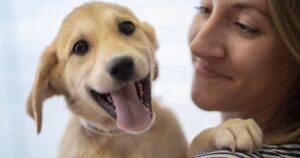 Socializing your dog teaches them how to react to the world around them healthily without any unnecessary fear or aggression. It is important to start socialization early, so it becomes their normal behavior. Ideally, it should be between three and 12 weeks of age, but not everyone is with their furry friend at that point in their life. Beyond 18 weeks, socialization gets a lot harder, but it is not impossible.
Socializing your dog teaches them how to react to the world around them healthily without any unnecessary fear or aggression. It is important to start socialization early, so it becomes their normal behavior. Ideally, it should be between three and 12 weeks of age, but not everyone is with their furry friend at that point in their life. Beyond 18 weeks, socialization gets a lot harder, but it is not impossible.
An important first step is to take your dog out on daily walks in public. This allows your dog to be exposed to many different experiences such as cars, other dogs, and strangers. The world becomes less scary after a few trips outside. Keep them on a short leash and take your dog on different routes to expose them to new sights and smells. Typically, new puppies should be exposed to different places, bodies of water, woods, beaches, and common neighborhood objects like street signs, bikes, strollers, skateboards, and benches.
Related, expose your dog to a wide variety of people such as men, women, and children so that they can get acclimated to the idea of people other than its owners. If your dog isn’t exposed to people other than its owners, it could become wary of anyone who isn’t their owner, so it is crucial to diversify whom your dog interacts with. Included in socialization is allowing your dog to meet unfamiliar people in unfamiliar clothes like hoods, jackets, sunglasses, and hats.
If your dog acts scared, stay calm and confident. Don’t push them, but don’t make a big deal out of their scared behavior. Use treats to give your dog a positive association with new people and experiences.
Socializing your dog allows them to enjoy the world around them and new experiences. To help your dog not fear new surroundings and people, start early, and show them all that your area has to offer! If you have any questions, feel free to contact Dr. Olsen at Olsen Veterinary Clinic at 618-656-5868.
What to Do to Keep Your Dog Cool This Summer – and What NOT to Do
 Keeping your dog cool during the summertime is difficult yet very important. The most important thing to remember is having plenty of fresh, cold water available for your pup. Whether it is just for playing in the back yard or going on a long hike, be sure to keep fresh, cold water available and accessible for them. When you are out on the go, bring a collapsible water bowl or a squirt bottle. Give your dog small amounts of water every 15 to 20 minutes. Be sure to have enough cool water with you to last the entire time you’re gone. If your dog starts panting excessively, get your dog shade and more water right away.
Keeping your dog cool during the summertime is difficult yet very important. The most important thing to remember is having plenty of fresh, cold water available for your pup. Whether it is just for playing in the back yard or going on a long hike, be sure to keep fresh, cold water available and accessible for them. When you are out on the go, bring a collapsible water bowl or a squirt bottle. Give your dog small amounts of water every 15 to 20 minutes. Be sure to have enough cool water with you to last the entire time you’re gone. If your dog starts panting excessively, get your dog shade and more water right away.
Similarly, an easy way to keep your dog cool while spending summer outside is to play in the water. A wet dog is a cool dog. You can play with your pooch in sprinklers, pools, and lakes. Swimming can help lower your dog’s body temperature and help them stay cool while having fun.
While there are things you can do to keep them cool, there are also things you should NEVER do. The biggest rule is to never leave your dog in a parked car, even with the windows cracked. Even on milder days, temperatures inside your car can quickly rise to dangerous and life-threatening levels. The CDC says that cars parked in direct sunlight can reach internal temperatures up to 131ºF-172ºF when it is 80ºF-100ºF outside. These temperatures are extremely dangerous, and your dog should never be subjected to it.
Also, avoid being outside with your dog during the midday heat. It is ok to be outside with your dog on mild, overcast days with low humidity. However, if it is sunny, 80º and high humidity, it is better to avoid the midday heat. On days like these, go early in the morning or later in the evening when it is not as hot. It is important to remember the danger of asphalt during the summer. Asphalt can get extremely hot in direct sun. Put your hand on the pavement to test the temperature. If it is too hot for your hand, it is too hot for your dog. You can also pour some water on the pavement. If it steams, it is way too hot. You can buy booties for your dog, so their feet are not on pavement, but it is easiest to avoid it all together. It is best to find trails. Because they aren’t hard surfaces and typically shaded, they’re less likely to cause injury.
During the summer, it is very important to know the signs of heatstroke in dogs. Pay attention to your dog’s behavior, body language, and more. Symptoms of heatstroke include excessive panting, excessive salivating, obvious discomfort, vomiting, diarrhea, disorientation, and seizures. If you notice any of these symptoms, get your dog to a cooler environment as soon as possible and calling your veterinarian for further instructions. You can use a thermometer to check their body temperature. If it is above 104º, it is time to get them out of the sun and decrease the level of activity. 104º is not dangerous, but it is the threshold to where it could become dangerous. When your dog’s temperature stays elevated, even after stopping activity and getting out of the heat, this is a sign that you need to intervene and call your vet. Please feel free to contact Dr. Olsen at Olsen Veterinary Clinic at 618-656-5868 with any questions.
9 Dog Training Tips
 Every puppy needs training, and sometimes it is hard to know what is best for your dog! With these tips, training can be fun and efficient!
Every puppy needs training, and sometimes it is hard to know what is best for your dog! With these tips, training can be fun and efficient!
1. Choose your Dog’s Name!
While this step may not seem to affect training, short names with strong endings are easier for your dog to pick up while training. These include Jasper, Jack, and Ginger. If your dog is an older dog when you begin training, they are probably used to their name. This doesn’t mean that you can’t change it. If your new pal is coming out of an abusive situation, a new name may even represent a fresh start. Dogs are very adaptable to new situations. If you decide to give them a new name, use it consistently and soon enough your pup will respond to it. Whatever you choose to name your dog, be sure to associate it with fun, pleasant experiences as much as possible, rather than negative ones. Ideally, your dog should think of their name in the same was they think of other fun things like walks and dinnertime!
2. Decide on the House Rules
This tip is like number one. Before your pup comes home, decide what is and is not allowed! This can include whether they are allowed on the bed or the furniture. Are parts of the house off limits? Will they have their own chair at the dining table? Setting the rules and expectations early can avoid confusion, for both you and your dog.
3. Help your Dog Relax
When your dog gets home, give them a warm hot-water bottle and put a ticking clock near their sleeping area. This will imitate the heat and heartbeat of litter mates and will soothe your puppy in their new environment. This tip may be even more important for a new dog that previously lived in a busy, loud shelter, particularly if they’ve had a rough time early in life. Whatever you can do to help your new pet get comfortable in their forever home will be good for both of you.
4. Reward Good Behavior
Training is based on rewarding good behavior with positive reinforcement. Use toys, love, praise, and treats of course. Let them know when they are getting it right. Similarly, never reward bad behavior. It will only confuse them.
5. Teach your Dog to Come When Called
The first command you teach your dog should be to come. Get down on their level and tell your pup to come using their name. When they do, get excited and use lots of positive reinforcement. Next time, try the “come” command when they are distracted with food or a toy. As your puppy gets older, you’ll continue to see the benefits of perfecting this command.
6. Train on “Dog Time”
Puppies and dogs live in the moment. Two minutes after they have done something, they’ve forgotten about it. When your pup is doing something bad, use your chosen training technique right away so they have a chance to make the association between the behavior and the correction. Consistent repetition will reinforce what they’ve learned.
7. Discourage Jumping Right Away
Puppies love to jump up in greeting, and some adults have learned bad habits. When your puppy or dog jumps on a person, don’t reprimand them; just turn your back on them, ignore the behavior and wait until they settle down before giving positive reinforcement. Never encourage jumping behavior by patting or praising your dog when they’re in a “jumping up” position.
8. Say No to Biting and Nipping
Instead of scolding your new pet, a great way to discourage your mouthy canine is to pretend you’re in a lot of pain when they bite or nip you – a sharp, loud yell should work. Most dogs are so surprised that they stop immediately. If verbal cues don’t work, try trading your hand or pant leg for a chew toy. This swap can also work when a puppy discovers the joys of chewing on your favorite shoes. They tend to prefer a toy or bone anyway. If all else fails, interrupt the biting behavior and respond by ignoring them.
9. End Training Sessions on a Positive Note
Your pup has worked hard to please you throughout their training. Leave them with lots of praise, a treat, some petting, or five minutes of play. This almost guarantees that they will show up at their next training session with their tail wagging and ready to work!
We hope you find these tips useful. For any other questions about training your new pup, or anything else, please contact us today!
You CAN Teach An Old Dog New Tricks!
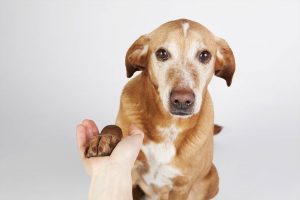 We have all heard the saying, “You can’t teach an old dog new tricks.” Not true! Yes, you can!
We have all heard the saying, “You can’t teach an old dog new tricks.” Not true! Yes, you can!
Most people associate training with young puppies, but the reality is that dogs are able to learn at any age. Surprisingly, adult dogs are often easier to train than younger puppies because they have more self-control. Whether you just adopted an adult dog, or your older pet needs to learn some new tricks, training offers mental stimulation and keeps your dog’s mind sharp. It is important that you be patient when training both adult dogs and puppies. If you have just brought an adult dog to your home, allow the dog time to adjust. Adult dogs have their own histories that may make them nervous about new surroundings. Don’t give up on the dog after only a few days. Adult dogs may need a period of adjustment which can take anywhere from a few days up to a month. Once the dog realizes that they have found their forever home, it will soon settle into being a part of the family.
Similar to housetraining a puppy, you should use a crate when housetraining an adult dog. You cannot assume that an adult dog is housetrained so you should keep it in a crate when you are not able to supervise it. When you release your dog from the crate, take your dog immediately to the place outside where you want your dog to relieve himself. If it does not relieve itself, re-crate your dog and try again later. Be sure that your crate is large enough and strong enough for your dog to fit comfortably. Your dog should be able to stand up, move around, and stretch out without difficulty. Soft-sided crates are often too flimsy to stand up to the needs of an adult dog so the best option is usually a metal crate that can be folded for easy transportation. Be sure to provide your crated dog with water, soft blankets, and chew toys as well as enough attention, exercise, and outdoor time so your dog can relieve itself.
If your dog is new to crates, introduce the concept slowly. Entice your dog to enter the crate by offering food and keep it in the crate for only a few minutes at first. Be sure to avoid using the crate as a form of punishment or leaving your dog isolated in its crate for long periods. The housetraining process usually goes by quicker for older dogs as they have more control over their bladders and bowels than young puppies do.
Whether you just brought your adult dog home, or your adult dog needs some training, an obedience class is a great place to do it. Obedience classes allows you and your dog to learn basic commands, such as lying down and walking on a loose leash. Even if your dog has never had any obedience training in the past, your adult dog will benefit from the class. Obedience classes also allow your dog to socialize with other dogs and people. You will be able to see how it reacts to other dogs and strangers and gives you the comfort of having a safe environment and a professional dog trainer on stand-by to offer advice.
If you bring an adult dog into your home, they may do things that they were allowed to do in their previous home that you do not want them to do in your home such as jumping on guests or lying on the furniture. To help your dog learn the rules of your house and more importantly, retrain them, be sure to start teaching the rules to your adult dog as soon as possible. The “Nothing in Life is Free” (NILF) dog training method is an effective way to teach your dog self-control. It requires that your dog behave appropriately before getting a desired treat, walk, or positive attention. Lastly, it is important that everyone in the household is on the same page. When different members of the family have different expectations on behavior, commands, and expectations, it can be confusing for the dog. When everyone agrees on appropriate behaviors and uses the same commands and rewards, your dog will learn faster and retain the training longer.
Most often, new owners of adult dogs do not know the experiences that the dog has had with training in the past. Positive reinforcement methods are the best bet for training. Using treats and plenty of praise is an effective method for training dogs of all ages and breeds. Keep things fun and upbeat instead of punishing your adult dog. It is a great way to strengthen the bond between you and your dog. It may take some work at the beginning, but teaching your dog the basic commands and working on solving behavior problems from day one means that your dog will soon settle into being a happy and healthy part of your home.
We are here to help you regardless of the age of your pet. If you have any questions, do not hesitate to contact our office!

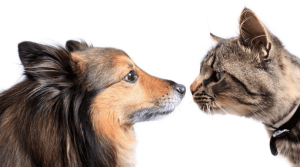 At Olsen Veterinary Clinic, we understand that pets, much like humans, can exhibit a range of behavioral issues. These behaviors can stem from anxiety, fear, lack of proper training, or even medical conditions. While some behavioral quirks are simply part of a pet’s unique personality, others can cause stress for both the pet and their owner. Fortunately, most of these behaviors can be managed or corrected with proper guidance and training.
At Olsen Veterinary Clinic, we understand that pets, much like humans, can exhibit a range of behavioral issues. These behaviors can stem from anxiety, fear, lack of proper training, or even medical conditions. While some behavioral quirks are simply part of a pet’s unique personality, others can cause stress for both the pet and their owner. Fortunately, most of these behaviors can be managed or corrected with proper guidance and training.